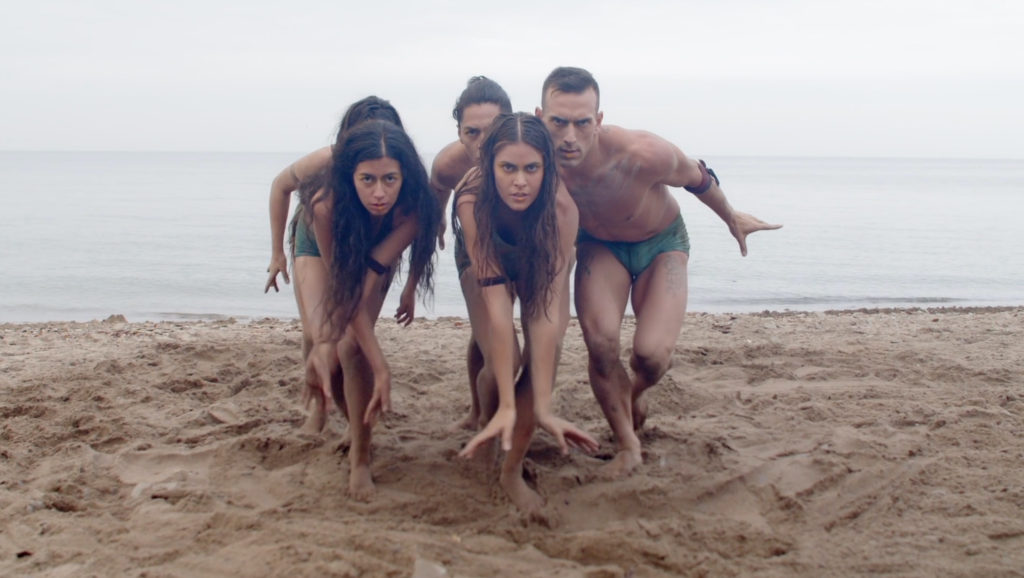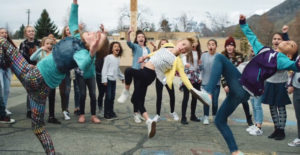Why We Dance: CBC’s The Nature of Things has some interesting thoughts - Vancouver Ballet Society
- Home
- Reviews 2020 - 2023
- Why We Dance: CBC’s The Nature of Things has some interesting thoughts

By Kathleen Smith
By exploring the diverse work of a handful of international scientists and artists, the new CBC documentary Why We Dance sets out to demonstrate how we learn, connect with each other, and survive through movement. Much more than a social ritual or performance spectacle, the film concludes, dance is a tool for evolution.
Based on American philosopher Kimerer LaMothe’s 2015 book that explores the fundamentals of human movement as key to evolutionary development, and directed by Canadian filmmaker Nathalie Bibeau (The Walrus and the Whistleblower), the film debuted recently on The Nature of Things and is available for streaming on CBC Gem through 2022.

Over the course of 45 minutes, Bibeau, who grew up taking dance class, recreates several experiments that bring scientific ideas to life. In one sweet segment, infants discover the world through repetition, practice, imitation, synchronizing movement with caregivers, and play, all of it movement based. Even before birth, points out UK social and evolutionary psychologist Bronwyn Tarr, who supervises some of the experiments, developing humans in the womb respond to rhythm with patterns of movement.
Tarr, who is with the Department of Experimental Psychology at Oxford University, explores the power of synchrony in a later section of the film. Apparently, synchronizing movement with another person releases endorphins, generating empathy and joy. Tarr’s Silent Disco experiment divides participants into two groups. One group dances together to simple choreography with the same music on their headphones, achieving synchronized movements at key moments; in the other group, the dancers each listen to different music and receive different instructions. Afterwards, the groups are asked a series of questions. The synchronized group exhibit great feelings of empathy and connectedness with each other, even if they had previously been strangers. Further testing suggests that endorphins confer higher pain thresholds among synchronized dancers. It seems there are many benefits that result from dancing together.

In an effort to define how dance is used differently by humans than by animals and birds, who also dance, a group of choreographers and dancers are tasked with reinterpreting the movement rituals of flamingos, chimpanzees, and cockatoos. “These are species that can also match beats, imitate gestures, and play in a manner similar to humans,” says LaMothe, “but we are the one species that puts all of these things together. We are the dancing species.”
Beautifully crafted and sensitively shot, Why We Dance makes a strong case for dance as a building block of human evolution. It advocates with great positivity for the purpose and significance of dance. But I couldn’t help but wonder about concert dance, where one group of humans sits and watches another move. What is the evolutionary rationale for this type of scenario?
Bibeau tells me over the phone from her home in Montreal, “From an evolutionary standpoint, you wonder why people are seated at concert dance and watching because that seems to defy what dance truly is. However, part of [learning] dance is to observe, for our brains to capture and absorb the repetitive patterns, so even watching them is a kind of movement, there is a kind of kinetic relationship. That isn’t how it usually happens with concert dance — you go, you watch, you leave — but I think that somewhere deep in our psyche the watching is the beginning of the dance.”
As well, Bibeau says, “In your everyday movements, when there’s any kind of repetition or creativity and any kind of synchrony, any kind of imitation or play, you are actually beginning to dance.” This goes beyond ideas about dance as entertainment or fun, or “about being a good dancer or a bad dancer, or someone who likes to dance at weddings or is afraid to dance at weddings.”

Perhaps because dance has been such an important element of human evolution, there has historically been a certain amount of fear and loathing associated with it. As well as efforts to control or suppress it. “That’s not really [about] hostility toward the body,” LaMothe suggests in a phone interview from her home in rural upstate New York, but “the focus we have on the practices of reading and writing. In order to be a citizen of the modern world you need to be able to read and write. And the practice of reading and writing is not natural, it’s not spontaneous. It takes years of training in specific bodily movements that focus our sensory awareness to our frontal limbs and our frontal lobes. So, the physical training that the practices of reading and writing require are the opposite of dancing. You see this very much in the clash of cultures that happens in colonialism.”

The colonial legacy is explored in a brief section featuring Sandra Laronde, the artistic director of Toronto’s Red Sky Performance, who speaks about what dance means to Indigenous cultures. “Dance is about connection to our ancestors, to the spirit world, to nature, to our future,” Laronde says. Years ago, the Canadian government banned traditional dances as part of an official policy to erase Indigenous identity. Thanks to the underground work of Indigenous elders, the precious heritage of dance was preserved. That’s crucial for First Nations, says Laronde, because “dance brings power and resilience to people.”
If there’s a central message to Why We Dance, it’s that re-connecting with dance — which is a complex expression of social behaviour in every human culture — may be a way forward for the human species in these perilous times. As Bibeau puts it, “We are all dancers.” But, as LaMothe says, “Western culture is a verbal, written culture –– and that needs to evolve. Otherwise, we’re going to kill ourselves and the planet.”

